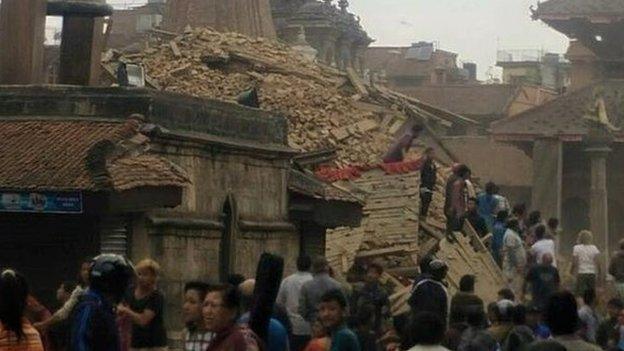In pictures: Four lives changed by Nepalese earthquake
- Published
Last year, on 25 April, a 7.8-magnitude earthquake struck Nepal, leaving more than 8,000 people dead and many thousands homeless. A large number of aftershocks followed, including one that measured 7.3 on 12 May 2015. Photographer Alison Baskerville travelled to Nepal with Handicap International UK to meet young people whose lives were changed forever by those events.

Uma Silwal
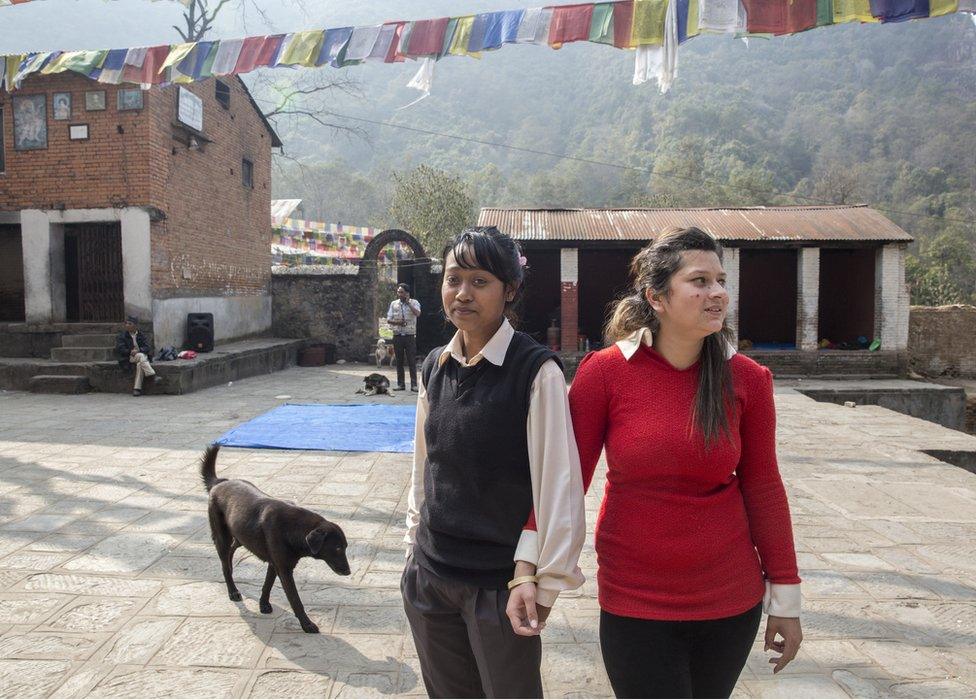
Uma Silwal (right) was at home with her family when the earthquake hit.
"We were sitting having lunch and the ground started to shake," she says. "At first we just froze, we had no idea what to do. Then we ran. I don't remember the wall landing on me. I just remember seeing everyone running ahead in front of me."
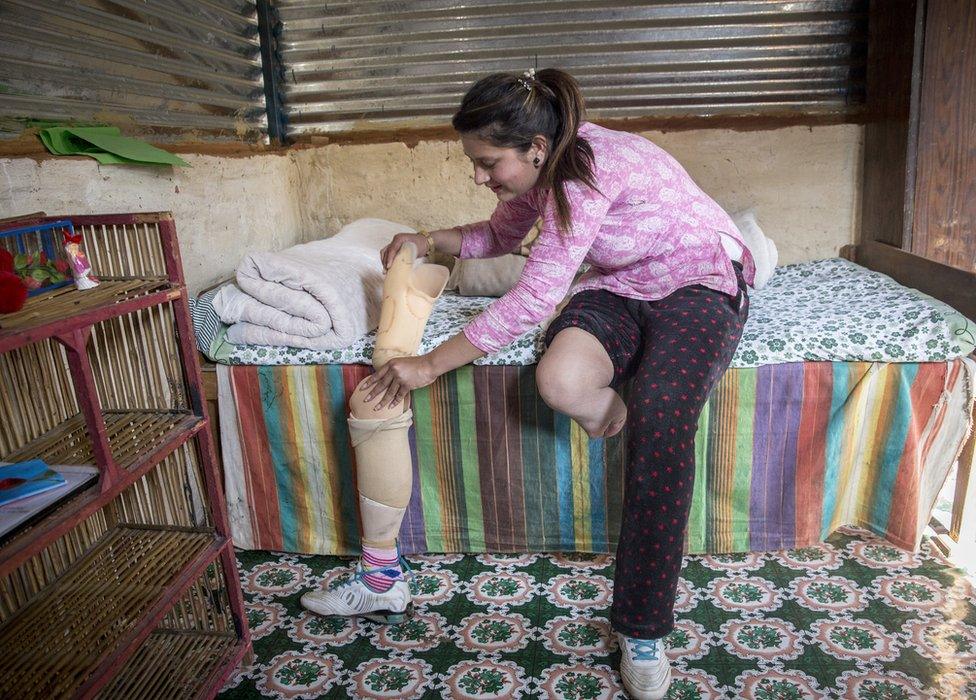
At the time of the earthquake Uma was studying engineering. Her father had just retired from a long career in the Nepalese Fire Service and was adjusting to life at home with a reduced income.
"I knew I had to get educated and find work so I could help support my family," Uma says.
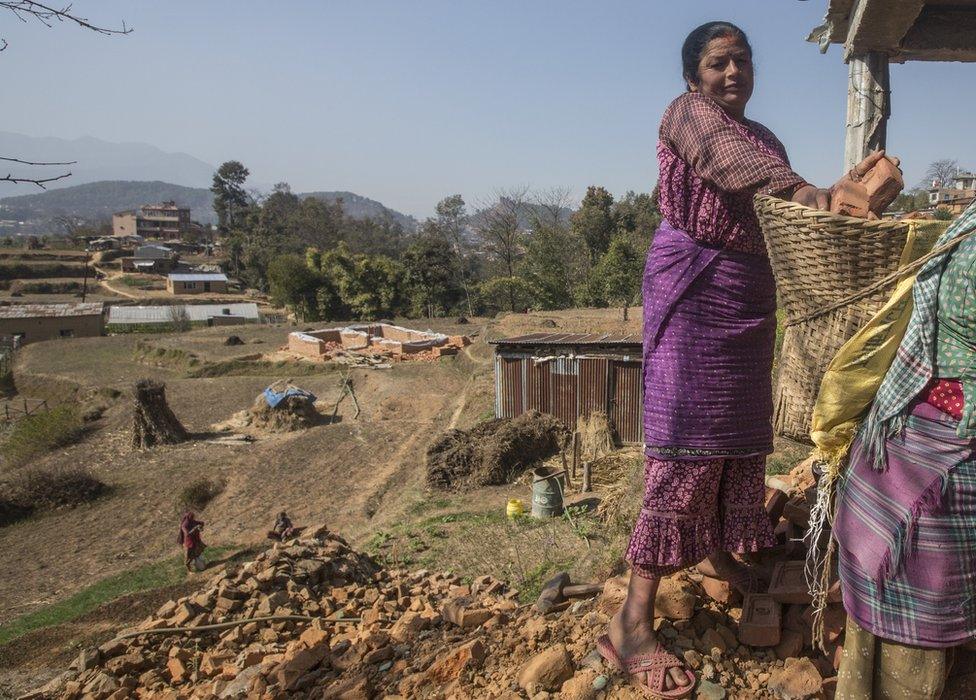
The earthquake destroyed their home. As well as looking after her family, Uma's mother has been involved in rebuilding their house, and feeding the workers.
"My mother does so much," says Uma. "Sometimes I worry that we take her for granted. She is the closest person to me and keeps our family together."
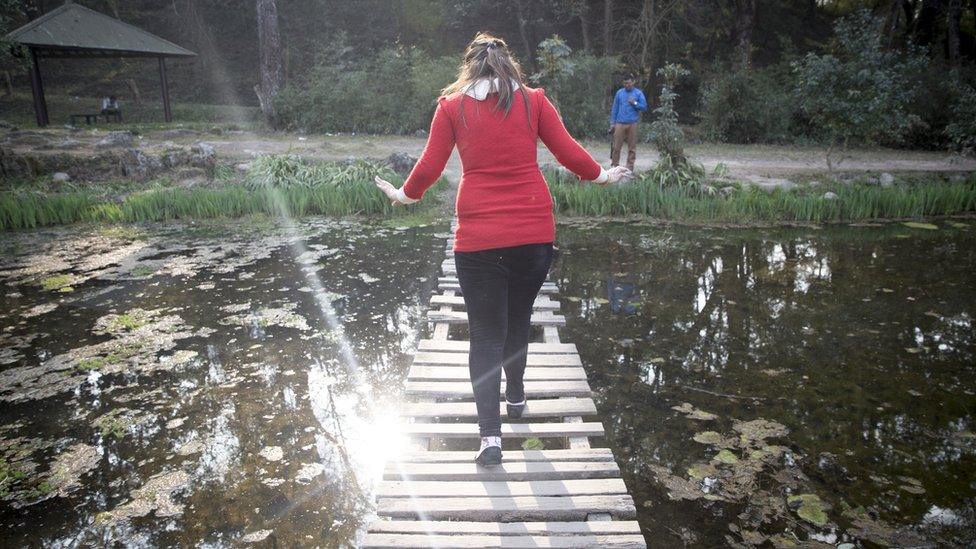
Uma later decided to change her degree to social work. "I had a few choices ahead of me before the earthquake. It felt like with two legs I have two paths to take.
"After the quake I only have one leg but it's also given me one clear path. To help those who are like me."

Amrit Magar
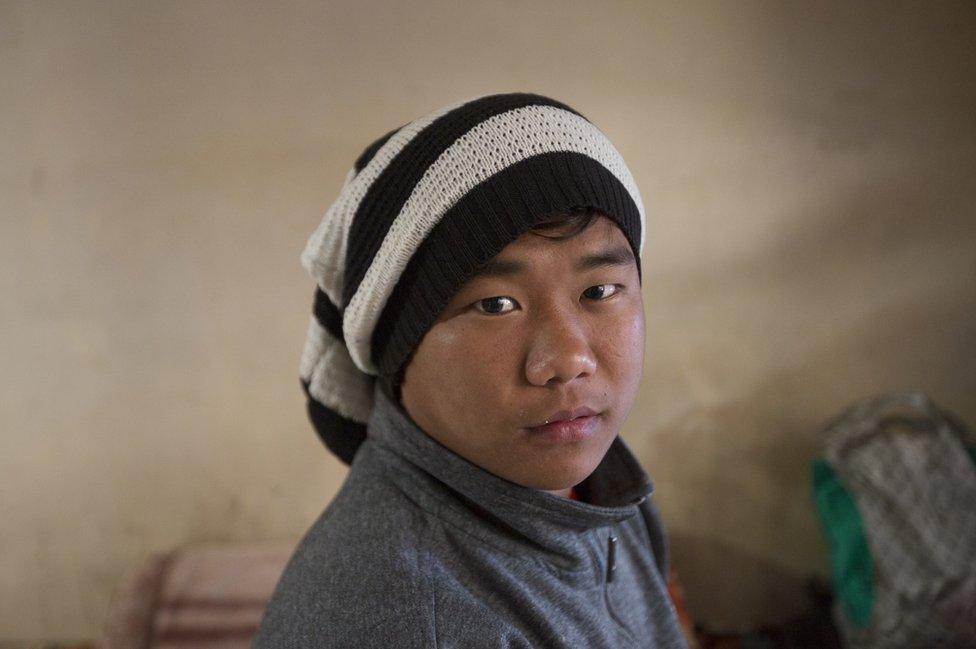
Amrit Magar was sleeping in his room in the Pepsicola district of Kathmandu when the earthquake hit.
With both parents at work he was home alone and unsure what to do. He tried to run from the house but as he escaped the building collapsed and he was buried in rubble.
Neighbours managed to pulled him free and he was taken to hospital.
"When the wall fell I was unconscious. When I woke up I thought my legs were fine," he says.
But Amrit remained in a fracture ward until the decision was made to remove one of his legs because it was so badly damaged.
"I loved football before my accident but now I like to read and I want to go back to school," says Amrit.
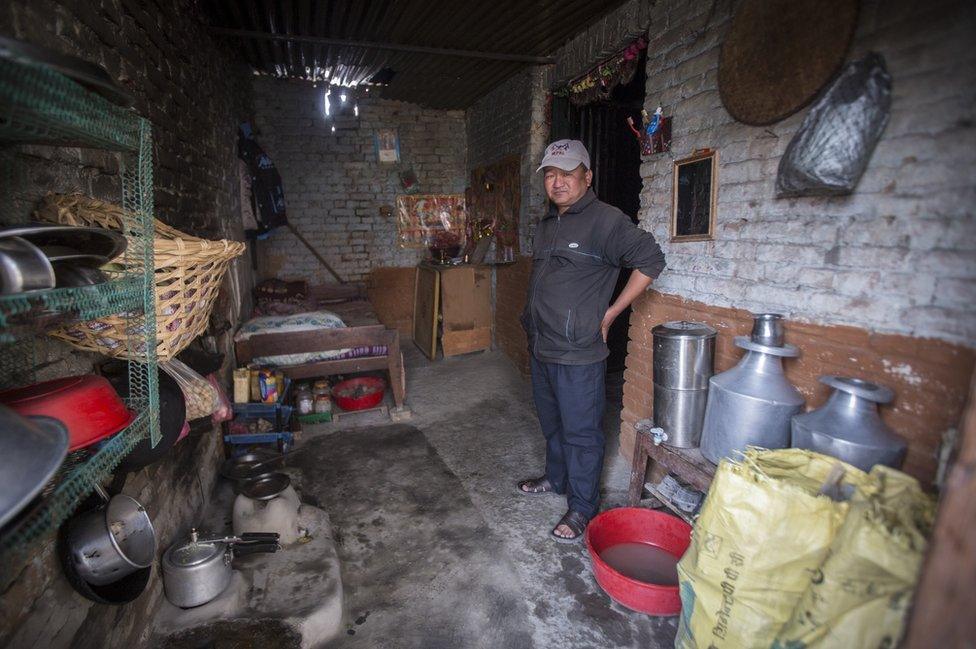
His father says they can no longer keep Amrit at home as they cannot afford the taxi fares for him to go to the local clinic.
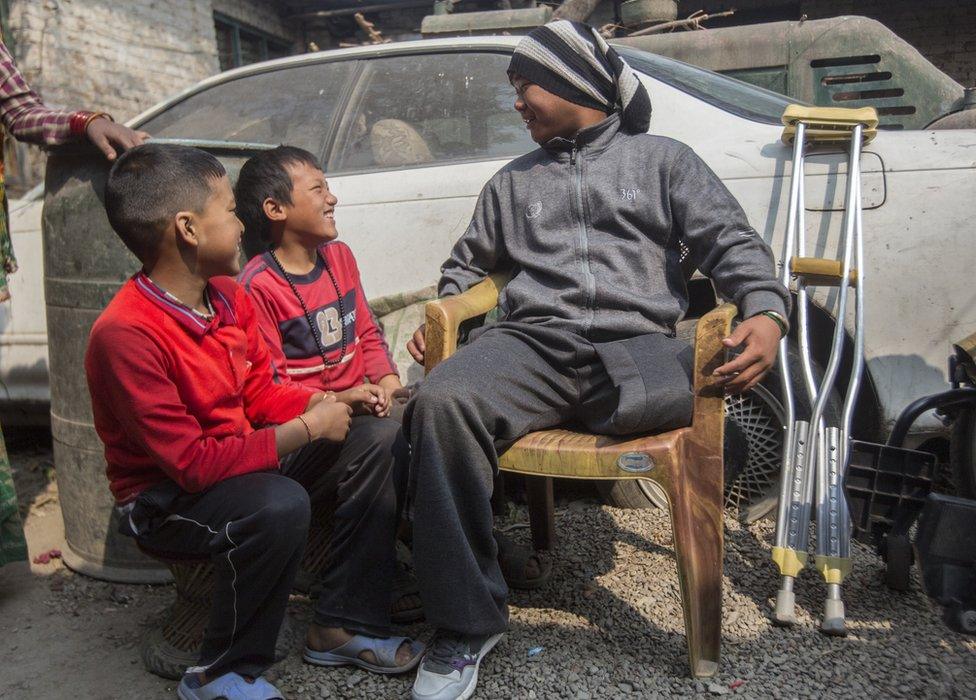
Amrit's brother Amish (middle) spent four weeks by his side in hospital.
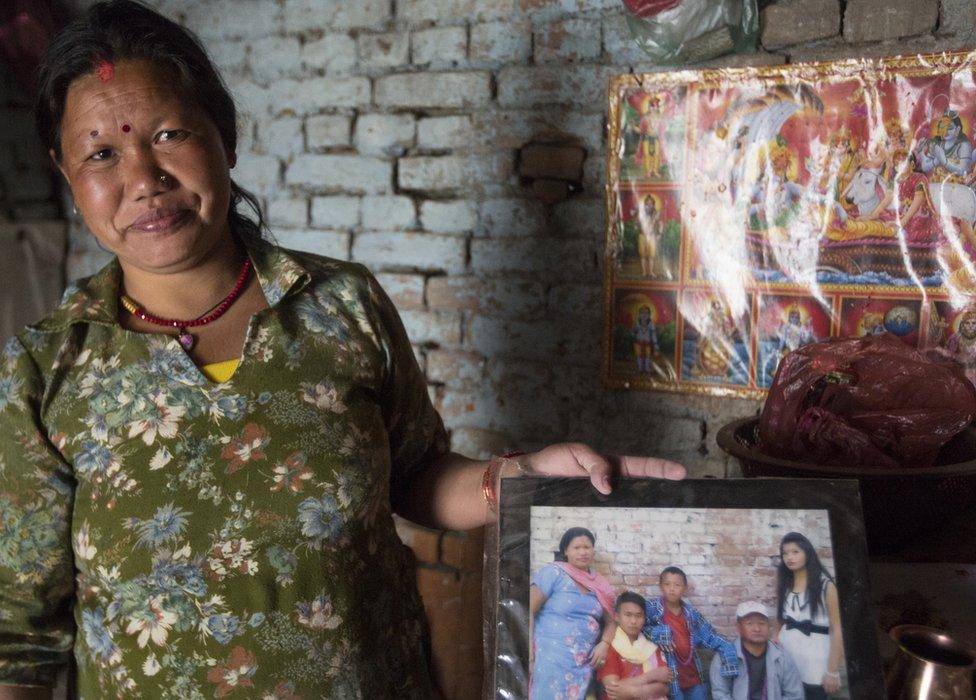
His mother, Chandra Kala Magar, holds a family photograph that was recovered from the home. They now live in a temporary home built by the family's employer.

Ramesh Khatri
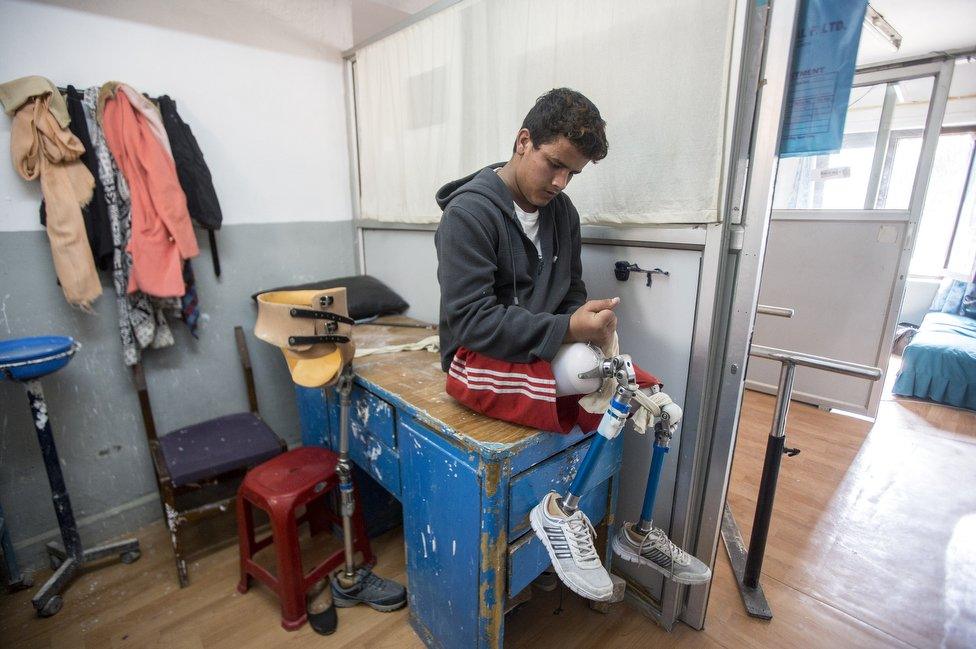
Ramesh Khatri, then 18, was trapped under rubble for almost three days. When he was eventually pulled free he was rushed to the already overcrowded Bir hospital in Kathmandu. He kept his badly damaged legs for almost five days before doctors decided they should both be amputated.
"I just had to accept this new life I have been given without my legs. It has not been easy but I'm really trying to start again and adapt to my new life," he says.
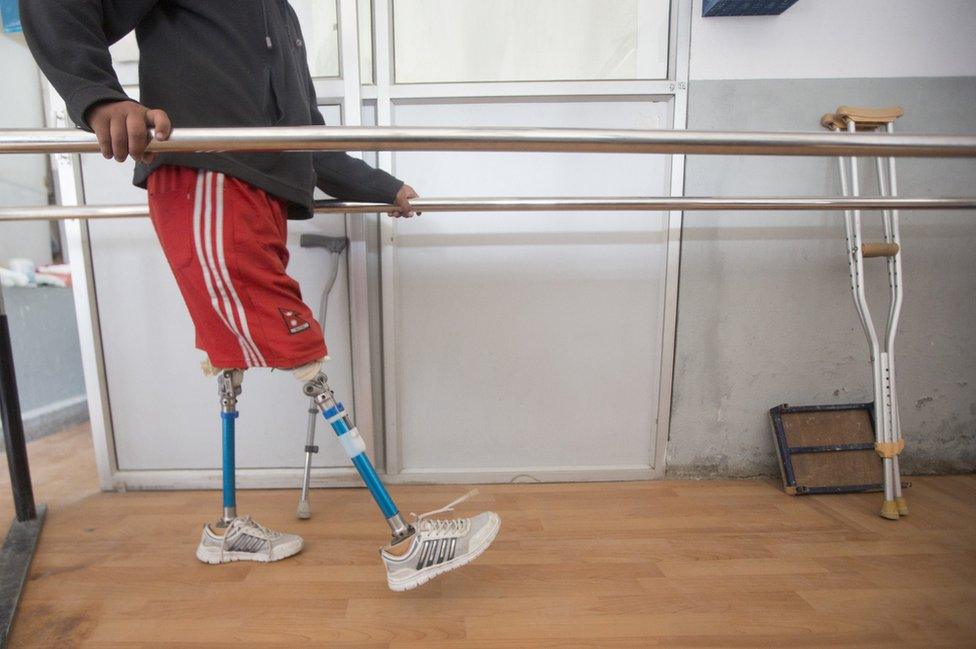
Ramesh uses the walkway at the National Disability Fund clinic in Kathmandu to train on his prosthetics.
Although he has become highly skilled in his wheelchair, he is now focusing on his walking.
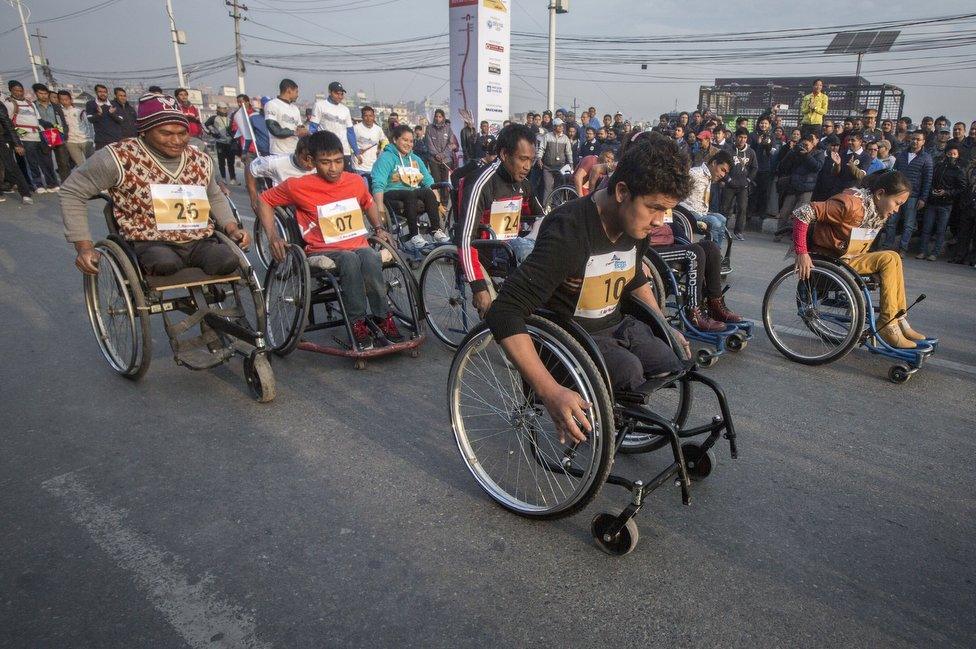
A few days after breaking his third wheelchair, Ramesh decided to take part in a 3km race in the city.
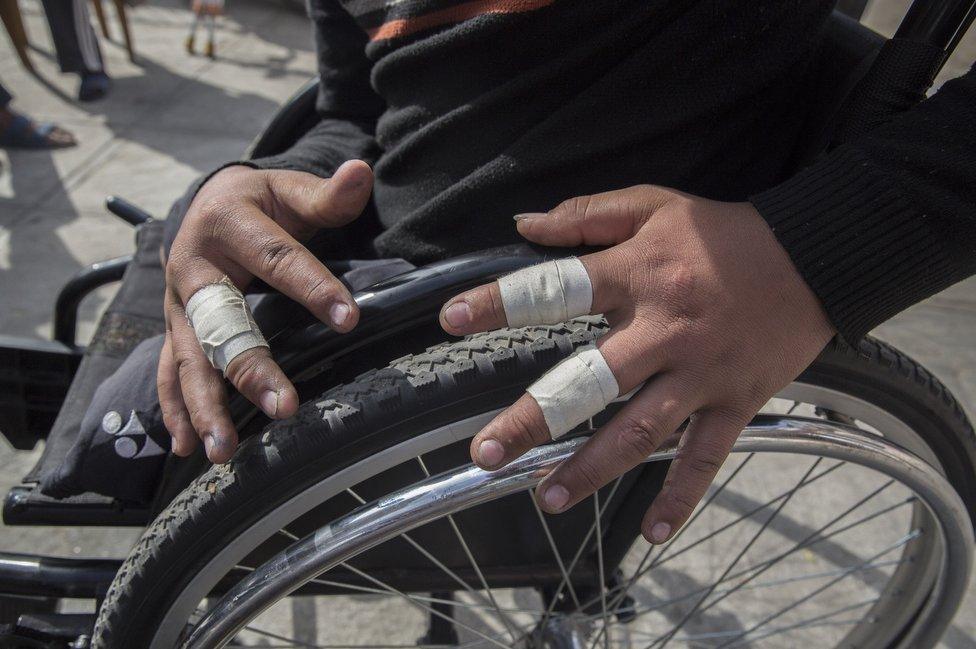
With bloodied hands and sweat on his brow, Ramesh pushed himself to sixth place out of 21. "Next year I'm going to win this race," he shouted as he received his finishing medal.
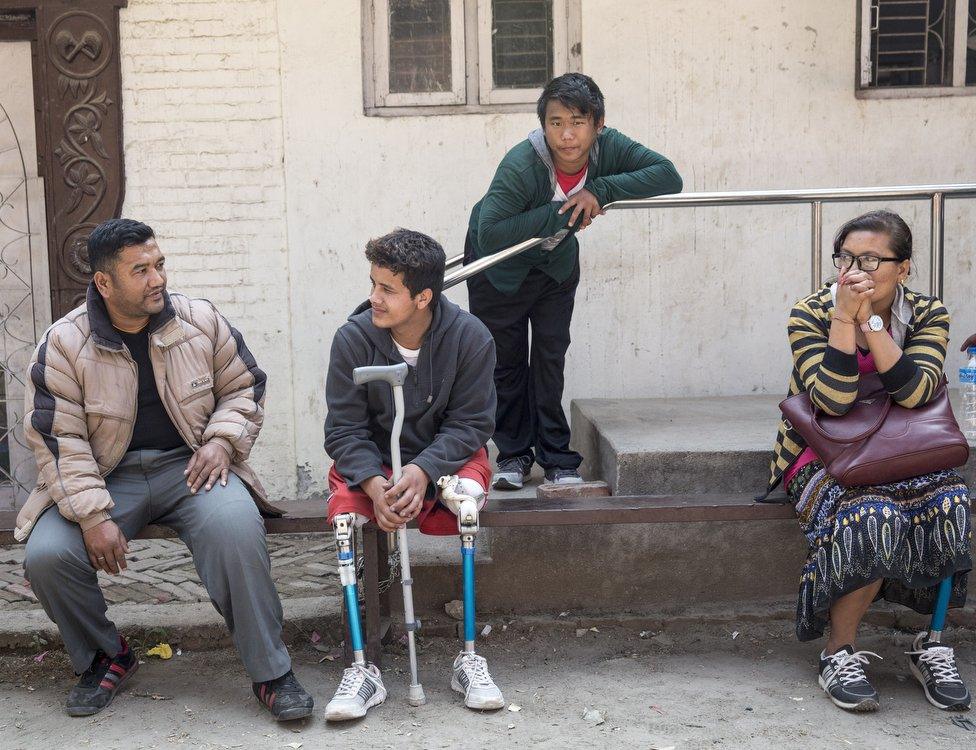
"He is ever the optimist," says Samrat Singh Basnet, the owner of the hostel where Ramesh lives. "He's always there in the clinic, helping and encouraging people."
"I want to study first and then I want to be a social worker to help other people like me," says Ramesh. "Whatever happened, happened. This is our future. We should start from here. We can start again even with our disability."

Sandesh Basnet
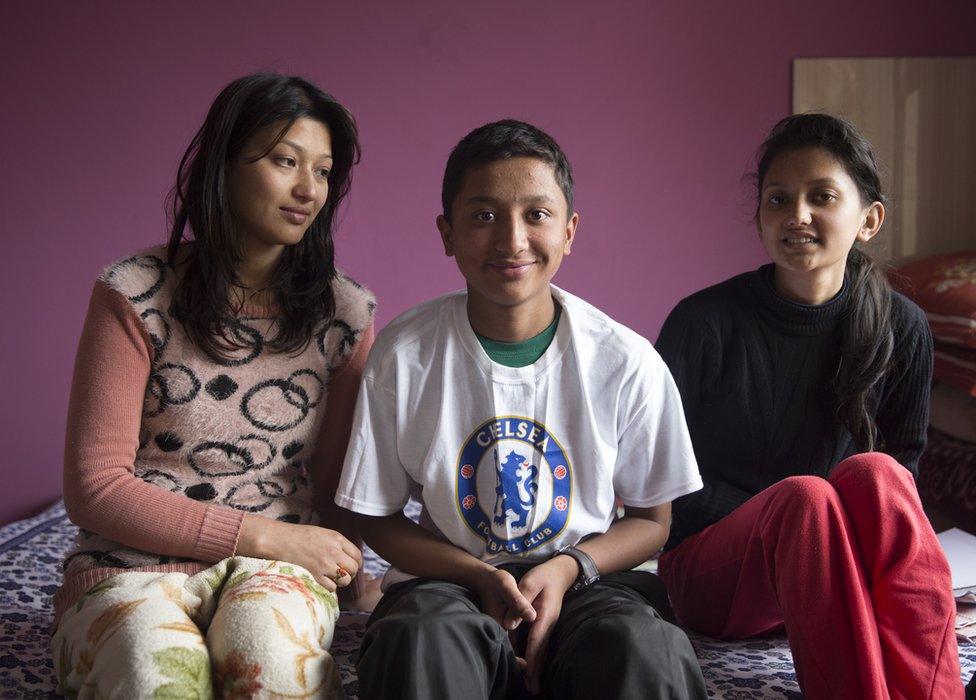
Sandesh was on his lunch break at the Nepal Police School when the earth began to shake. Along with his classmates he fled from the room where they were.
But the outside wall collapsed on top of him, pinning him to the ground.
"We were going to hide under the beds but then we decided to run," says Sandesh. "Then the wall fell down on me. I was unconscious until I got to hospital."
He too lost his legs because of the injuries he sustained. In hospital, he also received the terrible news that his best friend had been killed.
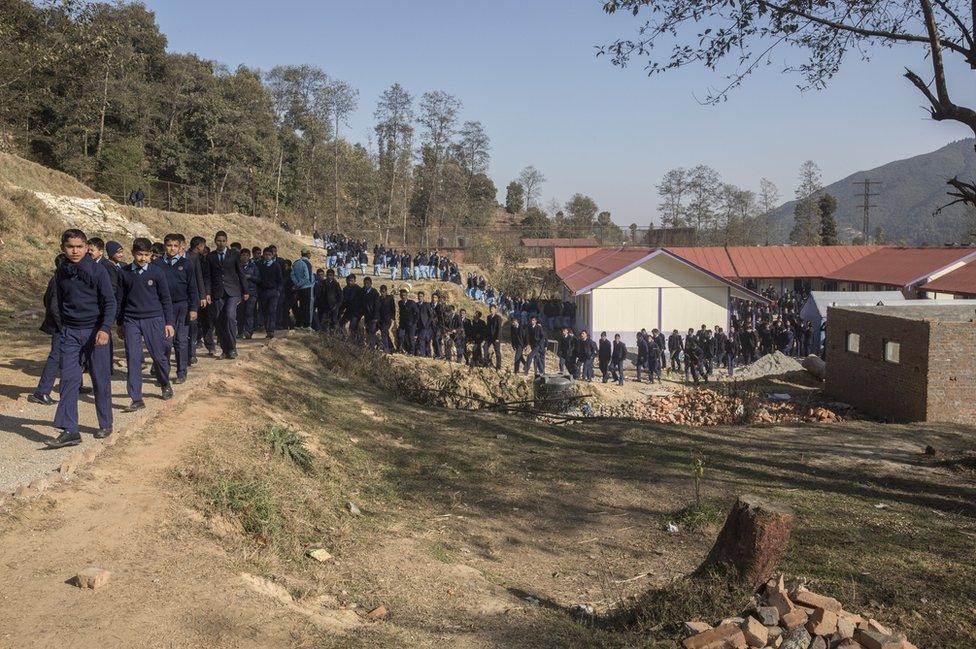
After almost nine months at home Sandesh has now returned to the police school.
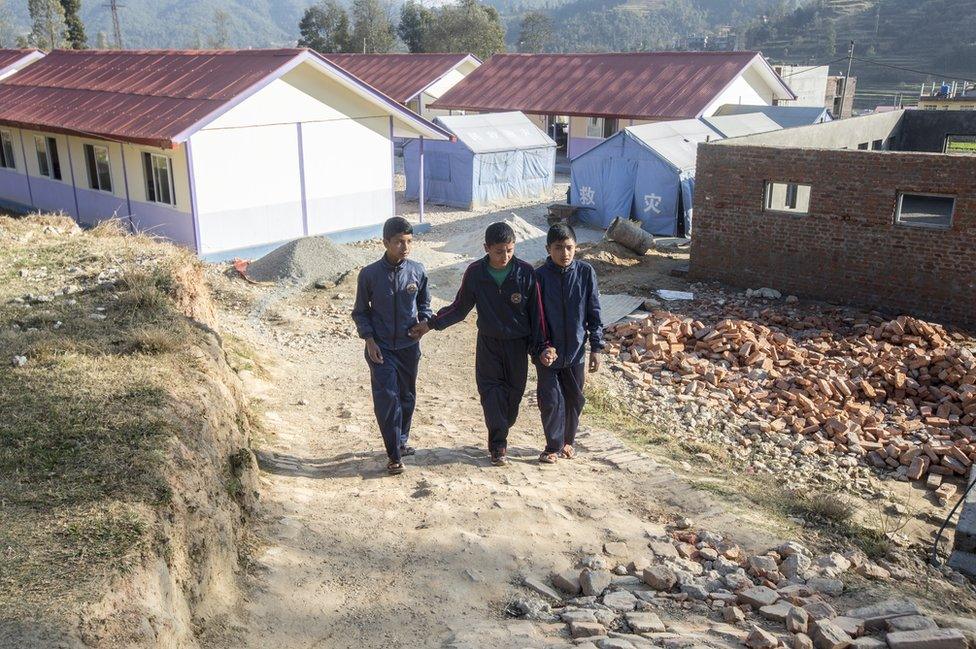
He is the only student with a disability and the school have tried their best to accommodate him. But there is a steep slope between the classrooms and accommodation blocks, which makes it difficult for Sandesh to move between the two areas. He stays in the classroom area throughout the school day.
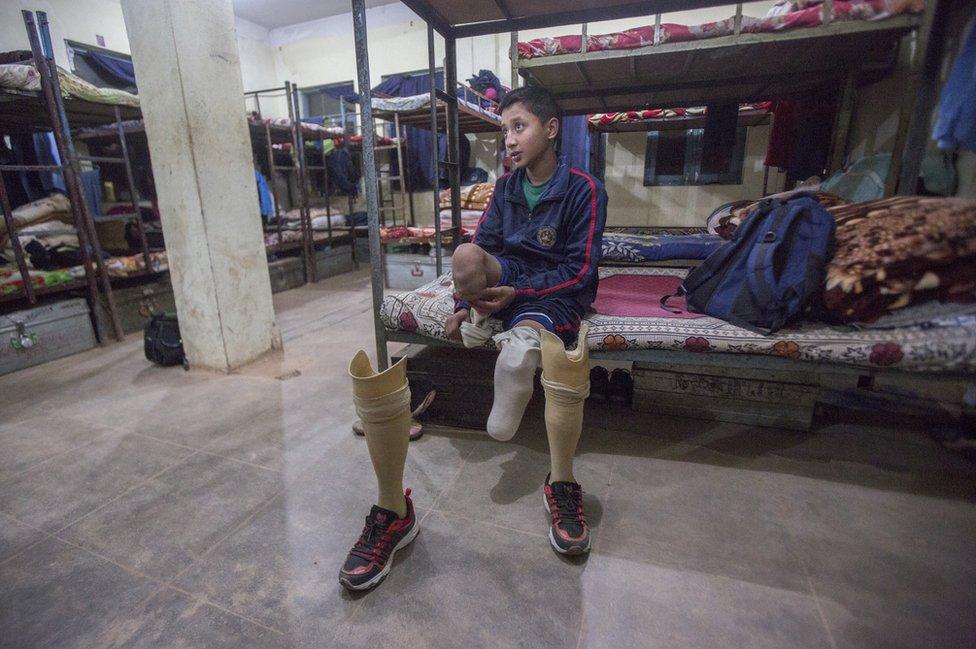
During his time in hospital he says he lost motivation and found it difficult to accept his condition. With help from therapists and fellow patient Ramesh, he was able to come to terms with his disability.
He began using a wheelchair, later also using crutches, until he received his prosthetic legs. "I thought I would never walk again," he says. "When I stood up for the first time I was so happy."
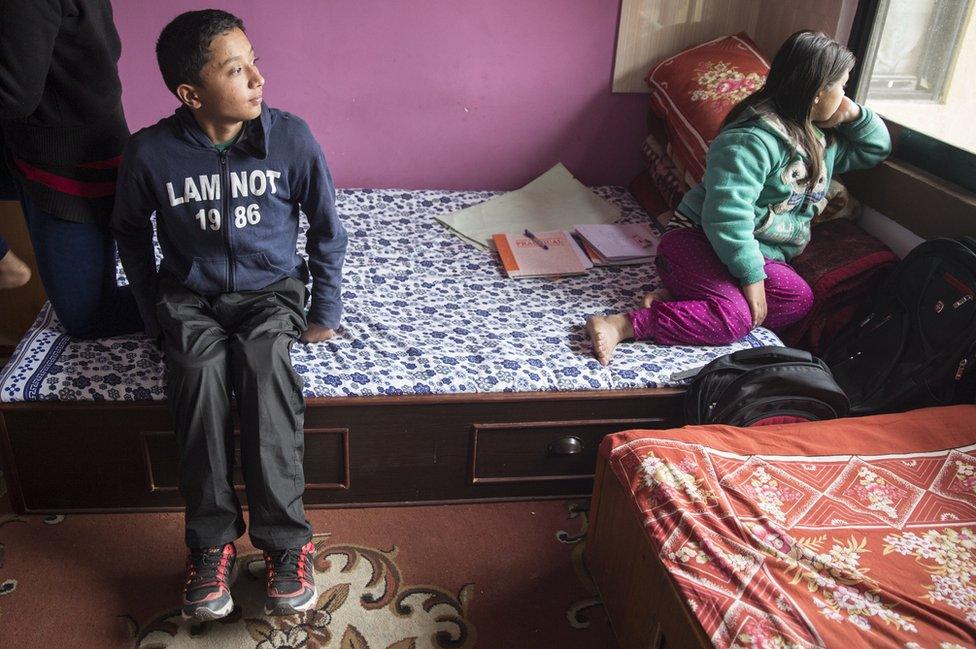
All photographs © Alison Baskerville / Handicap International
- Published2 April 2016

- Published15 May 2015
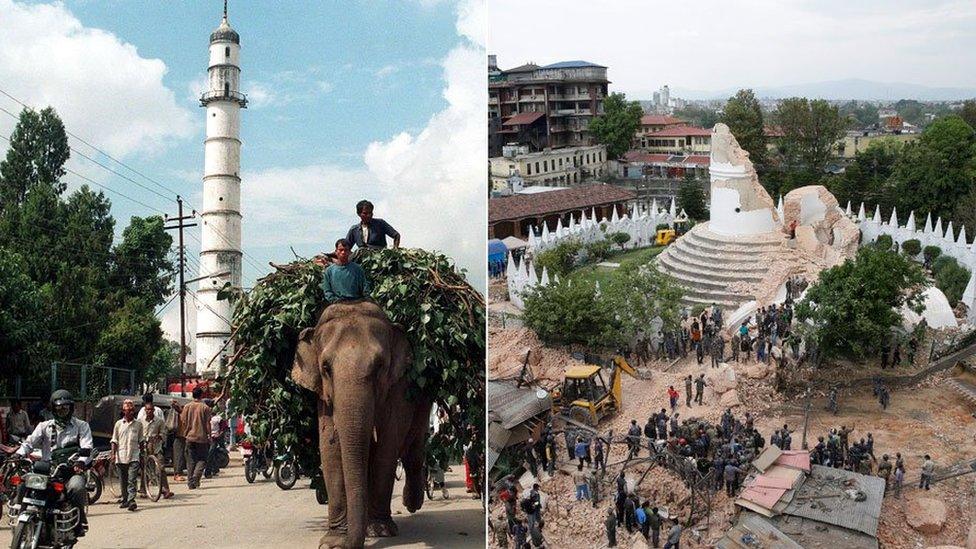
- Published25 April 2015
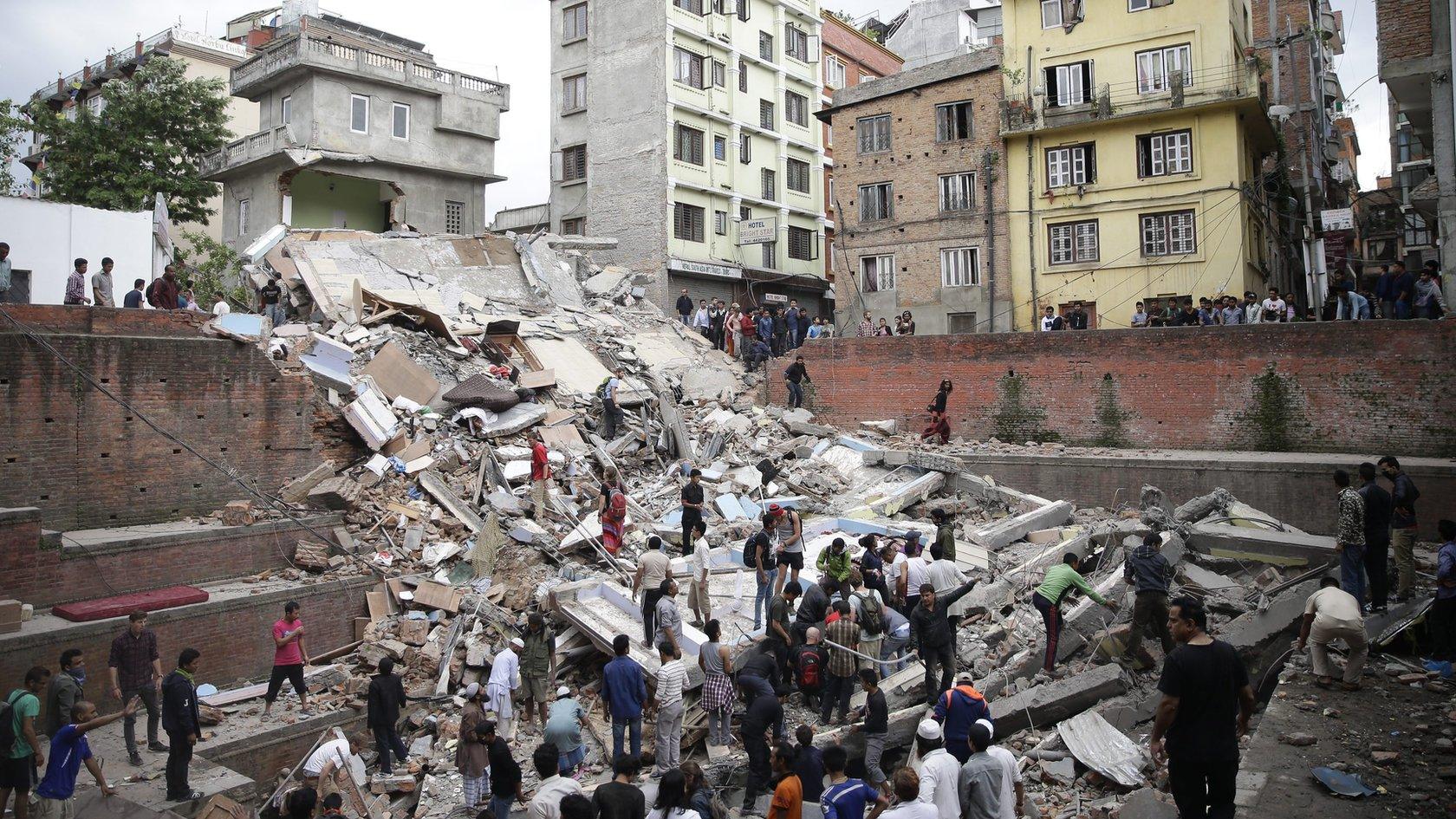
- Published25 April 2015
